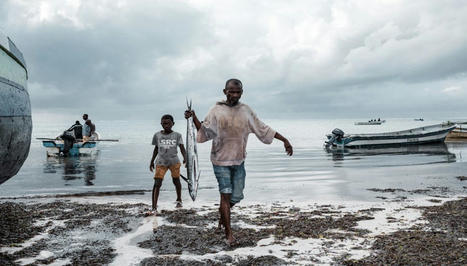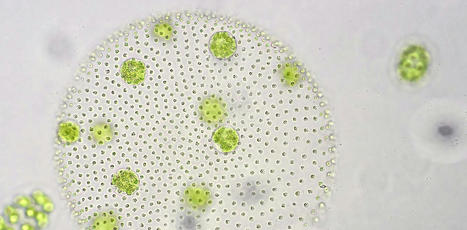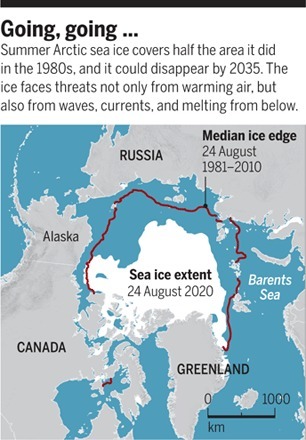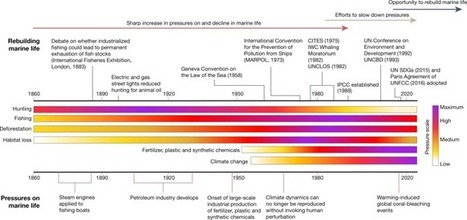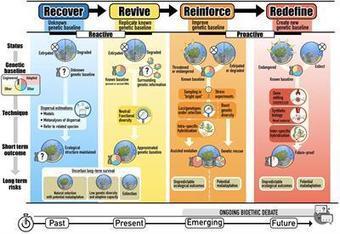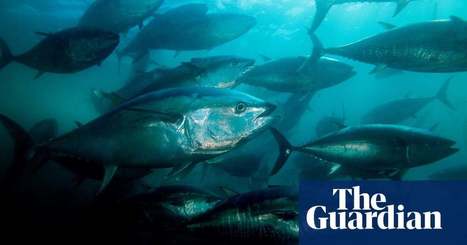"Experts from around the world gathered at the OECD in November 2023 for a workshop dedicated to mitigating and adapting fisheries to climate change. We asked experts three questions: How is fishing affected by climate change? How can smart policies reduce the GHG emission from fishing? And what can the OECD do about climate change and fisheries?"
This video shares the responses of six of those experts:
Olivier Thébaud: Economist - Ifremer, UMR AMURE - Centre for Law and Economics of the Sea
Nathalie Hilmi: Section Head of Environmental Economics - Centre Scientifique de Monaco
Paul Tacuri: Fisheries Resource Analyst - Instituto del Mar del Perú
François Bastardie: Senior Researcher - Technical University of Denmark
Sara Hornborn : Researcher Sustainable Seafood - Research Institute of Sweden
Björn Åsgård: Deputy Director in the Division for Fisheries Game Management and Reindeer Husbandry - Swedish Ministry of Rural Affairs and Infrastructure
Get Started for FREE
Sign up with Facebook Sign up with X
I don't have a Facebook or a X account

 Your new post is loading... Your new post is loading...
Current selected tag: 'climate change'. Clear
Blue carbon’ was coined over a decade ago to describe the contribution of mangroves, seagrasses, and tidal marshes to carbon drawdown in coasts and oceans, concomitantly attracting attention of policy-makers and resource managers to their potential as a natural climate solution. Here, we explore the emergence and evolution of this relatively new research field through bibliometrics approaches to investigate patterns and trends in scientific publications through time. Our aim was to understand the evolution of blue carbon science, from where we came from and where we are now. We analysed 1,729 papers from 5,763 authors. Overall, the carbon-sink capacity of these ecosystems has been recognised long before the term ‘blue carbon’ was coined; with an annual percentage growth rate of 20% y− 1. Research attention was highest for mangroves (~ 38% of publications), followed by saltmarshes (~ 22%), and seagrasses (~ 18%); while ~ 16% of the studies included two or more blue carbon ecosystems and 5% of the studies focused on other ecosystems. The citation burst analysis showed that, in the 1990s, the hot topic (i.e., fast-growing topic) was related to the overall flux and dynamics of carbon, with a recent transition to the role of coastal vegetation to climate change mitigation from 2009. The term ‘blue carbon’ became a hot topic in 2017, with the strongest citation burst between 2017 and 2020. This bibliometric study draws the patterns and trends of blue carbon science and indicate that this field is evolving through time to focus more on the blue carbon role as nature climate solutions.
Agrodoc Ouest's insight:
Le terme "carbone bleu" a été inventé il y a plus de dix ans pour décrire la contribution des mangroves, des herbiers marins et des marais littoraux à la réduction du carbone sur les côtes et dans les océans, attirant ainsi l'attention des décideurs et des gestionnaires de ressources sur leur potentiel en tant que solution naturelle au problème climatique. Nous explorons ici l'émergence et l'évolution de ce domaine de recherche relativement nouveau en utilisant des approches bibliométriques pour étudier les modèles et les tendances des publications scientifiques au fil du temps. Notre objectif était de comprendre l'évolution de la science du carbone bleu, d'où nous venons et où nous sommes maintenant. Nous avons analysé 1 729 articles de 5 763 auteurs. Dans l'ensemble, la capacité de fixation du carbone de ces écosystèmes a été reconnue bien avant que le terme "carbone bleu" ne soit inventé, avec un taux de croissance annuel de 20 % par an. L'attention de la recherche était la plus forte pour les mangroves (~ 38 % des publications), suivies par les marais salants (~ 22 %) et les herbiers marins (~ 18 %), tandis que ~ 16 % des études incluaient deux écosystèmes à carbone bleu ou plus et que 5 % des études se concentraient sur d'autres écosystèmes. L'analyse de l'éclatement des citations a montré que, dans les années 1990, le sujet brûlant (c'est-à-dire le sujet à croissance rapide) était lié au flux et à la dynamique globaux du carbone, avec une transition récente vers le rôle de la végétation côtière dans l'atténuation du changement climatique à partir de 2009. Le terme "carbone bleu" est devenu un sujet brûlant en 2017, avec la plus forte poussée de citations entre 2017 et 2020. Cette étude bibliométrique dessine les modèles et les tendances de la science du carbone bleu et indique que ce domaine évolue dans le temps pour se concentrer davantage sur le rôle du carbone bleu en tant que solutions climatiques naturelles. Traduit avec www.DeepL.com/Translator (version gratuite)
Structurally complex kelp forests, pushed beyond their tipping points, are being replaced by mat-like, low-structure turf algae around the worlld Kelp forests, found at temperate latitudes along approximately twenty-five percent of the world’s coasts, are pivotal to ocean health. But due to human-induced climate change and other environmental pressures, these swaying forests are disappearing rapidly in localized areas of South Australia, the Baltic Sea, and Atlantic Canada. In these regions, turf algae, a fast-growing opportunistic species that drastically changes the diversity and structure of an ecosystem, are quickly replacing the kelp forests..
The Blue Carbon Challenge, an initiative from Friends of Ocean Action, UpLink and the Mangroves Working Group, has identified 12 projects that harness the potential of blue carbon to support ecosystem conservation, restoration and coastal management. The 12 organisations will receive technical support and valuable connections to scale their interventions – and bring strong blue carbon credits to the market.
Whales contribute to marine ecosystem functioning, and they may play a role in mitigating climate change and supporting the Antarctic krill (Euphausia superba) population, a keystone prey species that sustains the entire Southern Ocean (SO) ecosystem. By analyzing a five-decade (1971–2017) data series of individual southern right whales (SRWs; Eubalaena australis) photo-identified at Península Valdés, Argentina, we found a marked increase in whale mortality rates following El Niño events. By modeling how the population responds to changes in the frequency and intensity of El Niño events, we found that such events are likely to impede SRW population recovery and could even cause population decline. Such outcomes have the potential to disrupt food-web interactions in the SO, weakening that ecosystem’s contribution to the mitigation of climate change at a global scale.
Agrodoc Ouest's insight:
Les baleines contribuent au fonctionnement des écosystèmes marins, et elles pourraient jouer un rôle dans l'atténuation du changement climatique et le soutien de la population de krill de l'Antarctique (Euphausia superba), une espèce-proie clé qui soutient l'ensemble de l'écosystème de l'océan Austral (SO). En analysant une série de données sur cinq décennies (1971-2017) de baleines franches australes (SRW ; Eubalaena australis) photo-identifiées à Península Valdés, en Argentine, nous avons constaté une augmentation marquée des taux de mortalité des baleines après les événements El Niño. En modélisant la réaction de la population aux changements de fréquence et d'intensité des événements El Niño, nous avons constaté que de tels événements sont susceptibles d'entraver le rétablissement de la population de baleines SRW et pourraient même entraîner son déclin. De tels résultats pourraient perturber les interactions du réseau alimentaire dans le SO, affaiblissant ainsi la contribution de cet écosystème à l'atténuation du changement climatique à l'échelle mondiale.
Pourquoi assister à cette session?
The ocean doesn’t just nourish us with food, it provides our every second breath and has absorbed 90% of the excess heat we have created in the last 50 years. Healthy humans need a healthy ocean. The ocean is under pressure from climate change, pollution, plastic and overfishing. This is not a secret – any policymaker who breathes the same air we do is aware of the enormous pressure we are putting on our oceans and climate. Yet for all the political promises being made on countering the climate and nature emergency, we have yet to realise meaningful, large-scale political action. We need this action to restore ocean health, so that we can all breathe easier.
From
ensia
Weitkamp, a research fisheries biologist with the Northwest Fisheries Science Center in Newport, Oregon, knew that something had been afoot in the northeast part of the Pacific Ocean since the fall of 2013, which was unusually sunny, warm and calm. A mass of warm water stretched from Mexico to Alaska and lingered through 2016, disrupting marine life. Tunicates weren’t the only creature affected; sea nettle jellyfish all but disappeared, while water jellyfish populations moved north to take their place, and young salmon starved to death out at sea, according to a report by Weitkamp and colleagues. Scientists dubbed this event “The Blob.”
From
phys
The world's deep oceans are warming at a slower rate than the surface, but it's still not good news for deep-sea creatures according to an international study.
Coral reefs are among the most biodiverse systems in the ocean, and they provide both food and ecological services. They are also highly threatened by climate change and human pressure. Cinner et al. looked at how best to maximize three key components of reef use and health: fish biomass, parrotfish grazing, and fish trait diversity. They found that when human pressure is low, all three traits can be maximized at high conservation levels. However, as human use and pressure increase, it becomes increasingly difficult to promote biodiversity conservation. At some levels of human impact, even the highest amount of protection is not able to maximize biodiversity conservation.
Agrodoc Ouest's insight:
La gestion locale pour atteindre de multiples objectifs - en examinant les récifs dans 41 pays, nous montrons que les AMP sans prélèvement et les zones d'utilisation durable (par exemple, les restrictions sur les engins de pêche) peuvent contribuer à la biomasse des poissons, à la biodiversité et au fonctionnement des écosystèmes, mais moins à mesure que la pression humaine augmente
Europe’s seas are home to some of the world’s most productive fisheries, and the European Union (EU) is the world’s largest trader of seafood products. (1) What we do with fish matters; as well as providing food and jobs for the fishing industry – fish keep our marine ecosystems functioning. Fish and marine life are the engines of our global ocean, the ocean that supplies us with every second breath drives our climate and has absorbed 90% of the excess heat produced from accelerated climate change. You could say the ocean is the heart and lungs of the planet. So with fish populations coming under severe pressure from both climate change and overfishing, the question arises – by ending one problem, can the other be alleviated? And can we do it fast enough to make a difference?
One of our most famous fish is in crisis. The scientific assessment of cod stocks across Europe shows that almost all of them are in a critical state, requiring a drastic cut in catches as soon as possible. This story state of affairs has been long in the making and was completely avoidable. It also comes at a crucial time for the planet when we need our seas in peak condition to tackle the threat posed by climate change.
From
our
Madrid, 6 December 2019:- A group of ocean experts, including the UN Special Envoy for the Ocean, scientists and NGOs convening for a COP25 event today in Madrid, How can Ending Overfishing Mitigate Climate Change?, have called for immediate action by governments worldwide to end overfishing in order to mitigate the impacts of climate change on the world’s oceans. |
The ocean absorbs a quarter of the CO₂ given out by human activities, playing a major role in slowing climate change. To have a better grasp of these processes is crucial to understand the ocean’s role in the global climate system and to better foresee disruptions caused by the changing climate.
Lanternfish, the Earth’s most abundant vertebrates, may be the ultimate food source. But will catching them ruin the climate?
Join Our Fish, the University of British Columbia’s Professor Rashid Sumaila and leading fisheries and marine scientists and economists from around the world to explore the connection between fisheries management and action on the climate and biodiversity emergency. The scientists will present a series of papers, recently published in the research topic “How Overfishing Handicaps Resilience of Marine Resources Under Climate Change” in Frontiers in Marine Science, to illustrate how governments can adopt measures that improve fisheries management and contribute to the restoration of ocean health and climate mitigation and adaptation.
Agrodoc Ouest's insight:
In a changing climate, there is an imperative to build coupled social-ecological systems—including fisheries—that can withstand or adapt to climate stressors. Although resilience theory identifies system attributes that supposedly confer resilience, these attributes have rarely been clearly defined, mechanistically explained, nor tested and applied to inform fisheries governance. Here, we develop and apply a comprehensive resilience framework to examine fishery systems across (a) ecological, (b) socio-economic and (c) governance dimensions using five resilience domains: assets, flexibility, organization, learning and agency. We distil and define 38 attributes that confer climate resilience from a coupled literature- and expert-driven approach, describe how they apply to fisheries and provide illustrative examples of resilience attributes in action. Our synthesis highlights that the directionality and mechanism of these attributes depend on the specific context, capacities, and scale of the focal fishery system and associated stressors, and we find evidence of interdependencies among attributes. Overall, however, we find few studies that test resilience attributes in fisheries across all parts of the system, with most examples focussing on the ecological dimension. As such, meaningful quantification of the attributes’ contributions to resilience remains a challenge. Our synthesis and holistic framework represent a starting point for critical application of resilience concepts to fisheries social-ecological systems.
By: Onyango Nyamol
Agrodoc Ouest's insight:
Selon les scientifiques, des millions de personnes dans 65 pays du monde, notamment en Afrique, en Asie du Sud-Est et dans le Pacifique, pourraient être confrontées à une malnutrition accrue en raison du changement climatique et de la surpêche. Selon une étude qui a analysé plus de 800 espèces de poissons provenant de plus de 157 pays, le changement climatique et la surpêche pourraient entraîner de graves pénuries de micronutriments vitaux provenant des océans. Les pays dont les pêcheries sont les plus menacées sont ceux d'Afrique subsaharienne, comme le Mozambique et la Sierra Leone, et ceux d'Asie de l'Est et du Pacifique, comme le Cambodge, l'Indonésie, la Malaisie et le Timor-Oriental, selon l'étude publiée la semaine dernière (20 juillet) dans Current Biology. (Open Acces )
Phytoplankton are microscopic algae living throughout the ocean’s surface waters. They can’t swim and are at the mercy of the currents and tides. Despite their small size, phytoplankton enable life in the oceans – and throughout the planet – to exist. There are two types of plankton – zooplankton, which are animals, and phytoplankton, which are algae. Phytoplankton are filled with chlorophyll which gives them a green colour, just like land plants. And like land plants, phytoplankton play a critical role, converting carbon dioxide and energy from the sun into food through photosynthesis, producing oxygen. These tiny organisms have been producing oxygen for the world for hundreds of millions of years. But most people know very little about them, what they do for the rest of the world and the threats they are facing. are microscopic algae living throughout the ocean’s surface waters. They can’t swim and are at the mercy of the currents and tides. Despite their small size, phytoplankton enable life in the oceans – and throughout the planet – to exist.
"Arctic sea ice is itself an endangered species. Next month its extent will reach its annual minimum, which is poised to be among the lowest on record. The trend is clear: Summer ice covers half the area it did in the 1980s, and because it is thinner, its volume is down 75%. With the Arctic warming three times faster than the global average, most scientists grimly acknowledge the inevitability of ice-free summers, perhaps as soon as 2035. “It's definitely a when, not an if,” says Alek Petty, a polar scientist at NASA's Goddard Space Flight Center."
Crédit photo : MAP: NATIONAL SNOW AND ICE DATA CENTER, UNIVERSITY OF COLORADO, BOULDER, ADAPTED BY N. DESAI/SCIENCE Source : Paul Voosen "New feedbacks speed up the demise of Arctic sea ice" / /Science 28 Aug 2020/ Vol. 369, Issue 6507, pp. 1043-1044
DOI: 10.1126/science.369.6507.1043
From
ensia
In the past 100 years, the planet has warmed in the range of 10 times faster than it did on average over the past 5,000. In response, thousands of species are traveling poleward, climbing to higher elevations, and diving deeper into the seas, seeking their preferred environmental conditions. This great migration is challenging traditional ideas about native species, the role of conservation biology and what kind of environment is desirable for the future.
Sustainable Development Goal 14 of the United Nations aims to “conserve and sustainably use the oceans, seas and marine resources for sustainable development”. Achieving this goal will require rebuilding the marine life-support systems that deliver the many benefits that society receives from a healthy ocean. Here we document the recovery of marine populations, habitats and ecosystems following past conservation interventions. Recovery rates across studies suggest that substantial recovery of the abundance, structure and function of marine life could be achieved by 2050, if major pressures—including climate change—are mitigated. Rebuilding marine life represents a doable Grand Challenge for humanity, an ethical obligation and a smart economic objective to achieve a sustainable future.
Global habitat deterioration of marine ecosystems has led to a need for active interventions to halt or reverse the loss of ecological function. Restoration has historically been a key tool to reverse habitat loss and restore functions, but the extent to which this will be sufficient under future climates is uncertain. Emerging genetic technologies now provide the ability for restoration to proactively match adaptability of target species to predicted future environmental conditions, which opens up the possibility of boosting resistance to future stress in degraded and threatened habitats. As such, the choice of whether to restore to historical baselines or anticipate the future remains a key decision that will influence restoration success in the face of environmental and climate change. Here, we present an overview of the different motives for restoration – to recover or revive lost or degraded habitats to extant or historical states, or to reinforce or redefine for future conditions. We focus on the genetic and adaptive choices that underpin each option and subsequent consequences for restoration success. These options span a range of possible trajectories, technological advances and societal acceptability, and represent a framework for progressing restoration of marine habitat forming species into the future.
Agrodoc Ouest's insight:
La détérioration globale des habitats des écosystèmes marins a conduit à la nécessité d'interventions actives pour stopper ou inverser la perte de la fonction écologique. La restauration a toujours été un outil essentiel pour inverser la perte d'habitats et restaurer les fonctions, mais on ne sait pas dans quelle mesure cela sera suffisant sous les climats futurs. Les technologies génétiques émergentes permettent aujourd'hui de restaurer de manière proactive l'adaptabilité des espèces cibles aux conditions environnementales futures prévues, ce qui ouvre la possibilité de renforcer la résistance aux stress futurs dans les habitats dégradés et menacés. Ainsi, le choix de restaurer les bases historiques ou d'anticiper l'avenir reste une décision clé qui influencera le succès de la restauration face au changement environnemental et climatique. Nous présentons ici un aperçu des différentes motivations de la restauration - récupérer ou faire revivre les habitats perdus ou dégradés dans leur état actuel ou historique, ou renforcer ou redéfinir les conditions futures. Nous nous concentrons sur les choix génétiques et adaptatifs qui sous-tendent chaque option et sur les conséquences qui en découlent pour la réussite de la restauration. Ces options couvrent un éventail de trajectoires possibles, d'avancées technologiques et d'acceptabilité sociétale, et représentent un cadre pour faire progresser la restauration des espèces formant des habitats marins dans le futur.

DocBiodiv's curator insight,
April 23, 2020 3:30 AM
Auteurs : Coleman Melinda Ann, Wood Georgina, Filbee-Dexter Karen, Minne Antoine J. P., Goold Hugh Douglas, Vergés Adriana, Marzinelli Ezequiel Miguel, Steinberg Peter David, Wernberg Thomas
Oceans are clearest measure of climate crisis as they absorb 90% of heat trapped by greenhouse gases
Oxygen in the oceans is being lost at an unprecedented rate, with “dead zones” proliferating and hundreds more areas showing oxygen dangerously depleted, as a result of the climate emergency and intensive farming, experts have warned. |




![[Article scientifique] The Evolution of Blue Carbon Science | HALIEUTIQUE MER ET LITTORAL | Scoop.it](https://img.scoop.it/_2EmNPVxyhpdEucoaGIO6Dl72eJkfbmt4t8yenImKBVvK0kTmF0xjctABnaLJIm9)
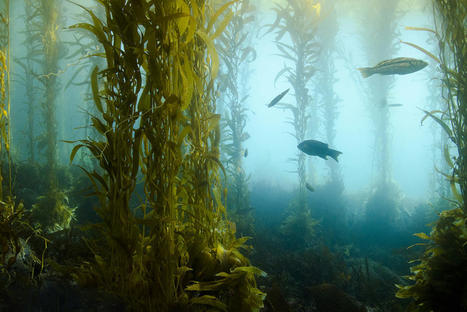
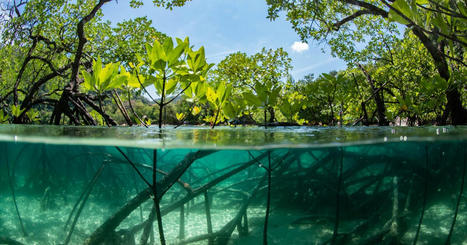
![[Article scientifique] Ocean warming threatens southern right whale population recovery | HALIEUTIQUE MER ET LITTORAL | Scoop.it](https://img.scoop.it/J3vHZoKqljE2BW3D5T7MpDl72eJkfbmt4t8yenImKBVvK0kTmF0xjctABnaLJIm9)
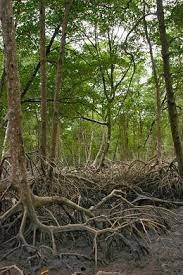
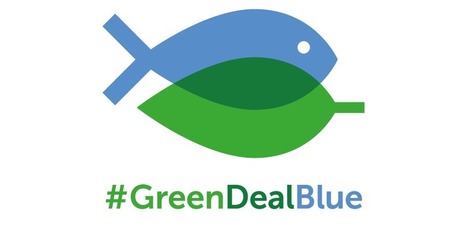
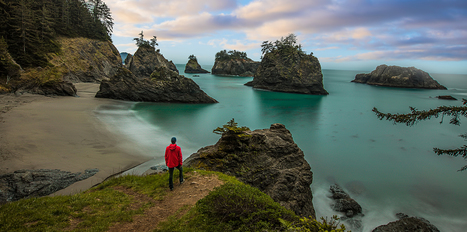
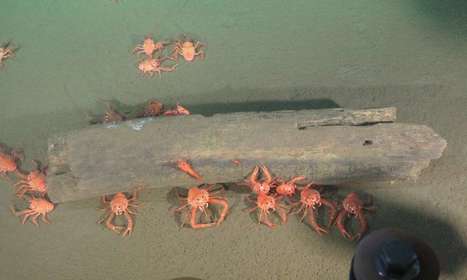
![[article] Meeting fisheries, ecosystem function, and biodiversity goals in a human-dominated world | Science | HALIEUTIQUE MER ET LITTORAL | Scoop.it](https://img.scoop.it/ERNL0O1ntmBVZiZABcQMrTl72eJkfbmt4t8yenImKBVvK0kTmF0xjctABnaLJIm9)

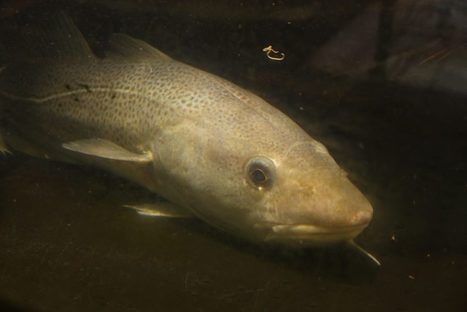
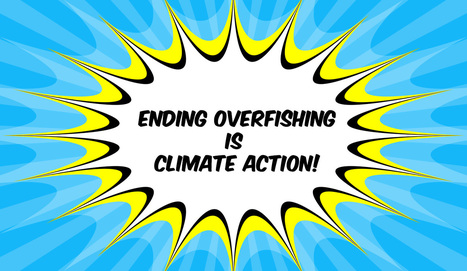

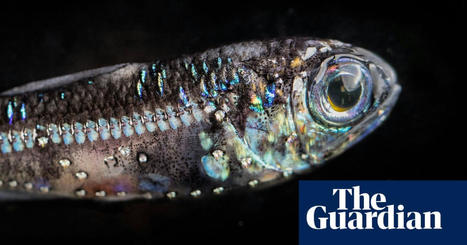
![[Save the date]Science Symposium: Fisheries Management as Climate Action - Our Fish Events at UN Ocean Conference, Lisbon-26 juin | HALIEUTIQUE MER ET LITTORAL | Scoop.it](https://img.scoop.it/RlMZzHbbwroJxnCq-iqPxzl72eJkfbmt4t8yenImKBVvK0kTmF0xjctABnaLJIm9)
![[Article] Attributes of climate resilience in fisheries: From theory to practice - Mason - - Fish and Fisheries | HALIEUTIQUE MER ET LITTORAL | Scoop.it](https://img.scoop.it/LmJuJr1qvUumwabSRFV-_jl72eJkfbmt4t8yenImKBVvK0kTmF0xjctABnaLJIm9)
